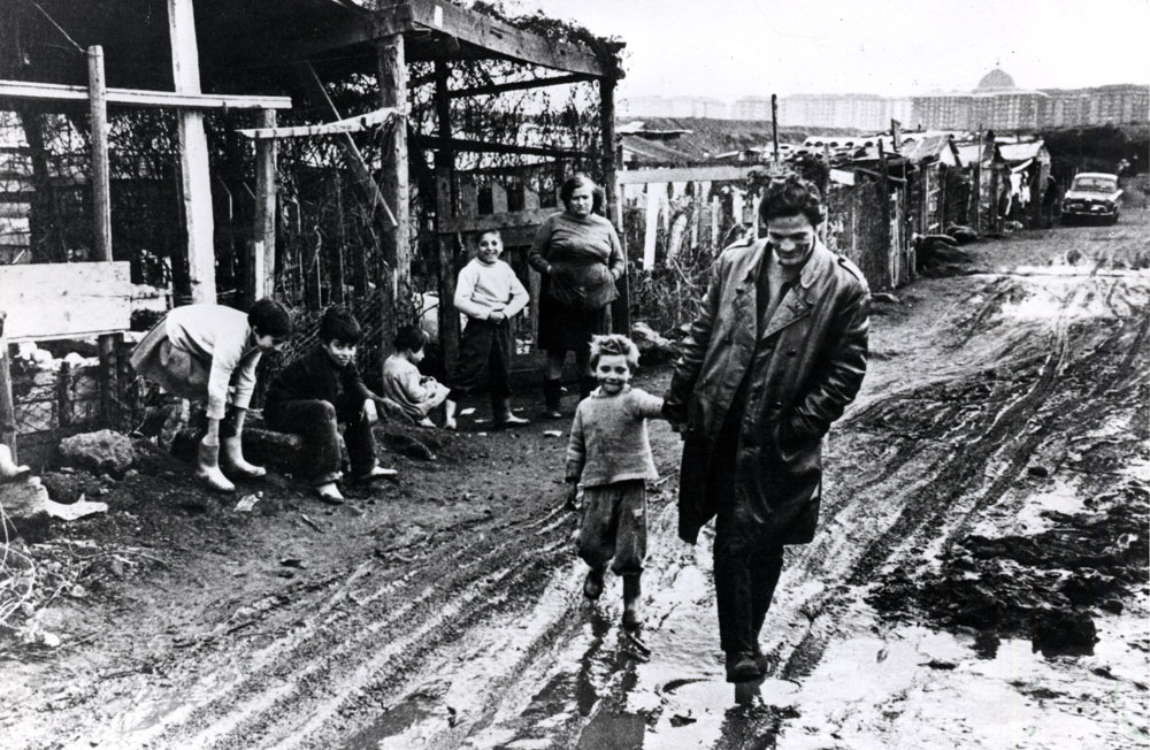ROME AND THE SUBURBS
Room 2
Following a complaint for corruption of minors and indecent exposure, in 1950 Pasolini fled to Rome with his mother Susanna, after being expelled from the PCI in Udine and losing his job in Valvasone, where he had been teaching since 1948. In the capital, he supported himself by doing occasional work at Cinecittà, while writing his first pages set in Rome, studying the Roman dialect live, thanks also to a young painter he met on the banks of the Aniene: Sergio Citti. At the same time, he began to frequent a large group of friends and intellectuals, including Sandro Penna, Carlo Emilio Gadda, Giorgio Caproni and Attilio Bertolucci. In 1951 he was hired at a secondary school in Ciampino and began his collaboration with Paragone, the magazine founded the previous year by Roberto Longhi. At the centre of Pasolini’s days and reflections in these years are the suburbs: squalid, abandoned, full of rubbish, closer to the Brazilian favelas than to the grey industrial suburbs of northern Italy. Amidst these ruins of abandoned factories, unfinished and already old houses, move a series of characters with picturesque names, whose elementary interiority is revealed in the action, rather than in the psychological depths. This led to the novels Ragazzi di Vita (1955), Una vita violenta (1959), and Il Rio della Grana, later merged in Alì dagli occhi azzurri (1965), which “I thought about simultaneously […] in the same months, in the same years, and together I matured and elaborated them”.
The already cinematographic eye of the writer Pasolini follows the parables of Riccetto, Tommasino and Piattoletta with a deep empathic realism, which translates into the search for a language as faithful as possible to that of his protagonists: a rough, dirty dialect, learned from “speakers” very distant from him.
It was this need to “maintain contact with reality, a physical, carnal contact, I would say almost of a sensual order” that led Pasolini to the expressive medium of the camera: “approaching cinema was therefore approaching a new technique that I had already been working on for some time in my literature”.
The study of and dedication to the cinematographic image seems to replace purely graphic and artistic expression in these years: the passages from the Roman novels find their ideal iconography in the frames of Accattone (1961), reproduced here from the pages of the first edition of the screenplay.




